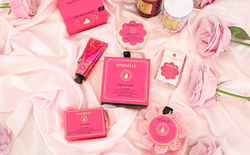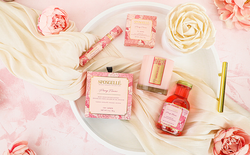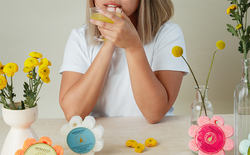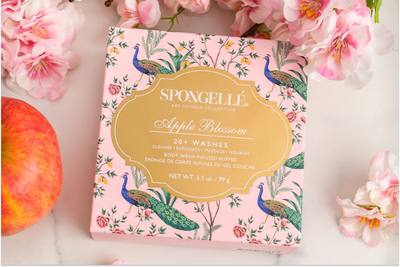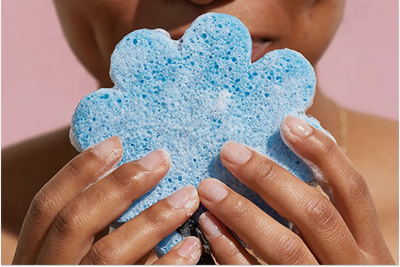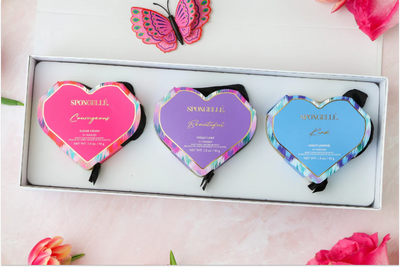Welcoming a newborn into the world can be an incredibly joyful and rewarding experience. As you navigate the early days of parenthood, ensuring your baby's well-being becomes the top priority.
One essential aspect of newborn care is maintaining proper hygiene. Babies can become quite stinky between feedings, diaper changes, spit-up, and everything else. While full baths are not recommended for newborns until the umbilical stump heals, sponge baths are a safe and effective option to keep your precious new addition clean and fresh during their first few weeks.
We will explore the items needed for a newborn's sponge bath, offering practical guidance to create a soothing bathing routine. These baths will help nurture your bond with your baby while promoting their overall health and hygiene.
What Supplies Do You Need for a Sponge Bath?
The first step to enjoying the experience of bathing your newborn is gathering all the necessary supplies beforehand. Here's a list of items you'll need.
Basin or Baby Bathtub
The first item you need is a suitable basin or a small bathtub. Look for a basin or tub that is specifically designed for infants, ensuring it is shallow enough to avoid any risks of drowning. A compact and portable option will make it easy to store and use anywhere in your home.
Mild Baby Soap or Cleanser
You'll want to choose a mild, hypoallergenic, nourishing product for newborns. Harsh chemicals and strong scents can irritate your baby's sensitive skin, so it's essential to prioritize gentle and safe products.
Soft Sponge
A soft sponge is important for cleaning your baby's delicate skin. Choose soft, non-abrasive materials to ensure a gentle touch that won't cause discomfort or irritation. Spongellé offers sponges specifically made for little ones that come enriched with a gentle cleansing formula to lock in moisture and nourish your baby's skin.
Warm Water in a Container
Warm water is essential for keeping your baby comfortable and happy during bathtime. You can fill the basin or baby bathtub with warm water before you start the sponge bath.
Be sure to test the water temperature with your wrist or a thermometer to ensure it's not too hot or cold for your baby. Aim for the water to be around 100°F. You also want the room to be warm since a wet baby can become cold quickly.
Hooded Towels or Regular Towels
Hooded towels are ideal for keeping your baby warm and cozy after the sponge bath. The hood helps to keep their head and ears covered, preventing heat loss. If you don't have hooded towels, regular soft towels will work as well.
Clean Diapers and Clothes
Preparing a clean diaper and clothes in advance will ensure you can dress your baby immediately after the sponge bath. You'll want to get the diaper on ASAP to avoid accidents requiring a second bath.
How Can You Make Sure Babies Stay Safe in the Bath?
Keeping your newborn safe during a sponge bath is of utmost importance. There are a few safety guidelines you can use to create a secure and pleasant bathing experience for your baby.
Maintain Proper Water Temperature
Use a thermometer to check the water temperature before placing your baby in the tub or basin. If the water is too hot, add cold water to lower the temperature. You may need to add warm water during the sponge bath to keep your baby from getting cold.
Keep Baby Secure During the Bath
Supporting your baby's head and neck is always important. Providing adequate support during bathtime will help to keep their head above water.
Hold the Baby With a Gentle Grip
While bathing your baby, maintain a secure yet gentle grip to avoid any slips or accidents. Babies can be quite wriggly, so keeping a firm enough grip to keep them in place will prevent discomfort.
Use a Non-Slip Surface in the Bathtub or Basin
Another way to prevent your baby from slipping is to line the bottom of the basin or bathtub with a non-slip surface. A rubber mat or a soft towel will provide additional stability and reduce the risk of any mishaps.
Prevent Accidents and Hazards
Stay attentive, and never leave the baby unattended during bathtime. It may not seem like that much water, but it can be enough if your baby slips down. Gather all the supplies you need beforehand so that you can focus solely on your baby's safety.
How Do You Give a Newborn a Sponge Bath?
Here is a step-by-step guide to ensure a soothing and enjoyable sponge bath for your newborn.
Bathtime Preparation
Pick a time when your baby is calm and content. You also don't want to bathe them immediately after a feeding, as it might lead to discomfort or spit-ups.
Prepare the bathtub or basin, filling it with warm water. Next, undress your baby and lay them on a soft and clean surface, such as a changing mat or a towel, in a warm, draft-free area until you're ready to place them in the bath.
Cleaning the Face and Neck
Use warm water to dampen a soft sponge. With your damp sponge, start by wiping your baby's face and neck, being careful around the eyes, nose, and mouth. Pat the areas dry with a soft towel to avoid any moisture retention.
Washing the Body
Start with the cleanest areas and move towards the dirtier ones. Typically, wiping in the following order is recommended: face, arms, chest, tummy, back, legs, and finally, the diaper area.
When cleaning sensitive areas like the umbilical stump, be extra gentle. Use a separate corner of the sponge to avoid cross-contamination.
After cleaning each section of the body, pat it dry with a soft and clean towel. This technique prevents the baby from getting cold and helps to keep their skin dry and comfortable.
Post Bath
Gently pat your baby's body dry with a soft towel, paying special attention to skin folds and creases. If your baby's skin is dry or if recommended by your pediatrician, apply a baby-friendly moisturizer to keep their skin soft and hydrated.
Once your baby is dry, dress them in clean and comfortable clothes, ensuring they are neither too tight nor loose.
How Often Should You Give Your Baby a Sponge Bath?
Let's explore the factors that determine when and how often you should give your baby a sponge bath:
When To Give a Sponge Bath
Most newborns do not require a full bath until their umbilical cord stump falls off and the navel heals completely. It's important to follow your pediatrician's advice on when it is safe to begin bathing your baby. Until that time, you can give them a sponge when they get dirty or stinky.
How Often To Bathe a Newborn
A sponge bath two to three times per week is usually sufficient to keep your baby clean and comfortable. Overbathing can strip the baby's delicate skin of natural oils, leading to dryness and irritation. As your baby becomes more active and starts crawling, you may gradually transition to more regular baths.
Other Factors To Consider
During hot and humid weather, your baby may sweat more and require more frequent sponge baths to stay comfortable. In contrast, you can reduce the frequency during colder months to avoid drying out your baby's skin.
You should also pay attention to your baby's skin. Fewer baths may be necessary to prevent irritation if they have sensitive skin or are prone to dryness or rashes. In these cases, focus on spot-cleaning soiled areas instead.
Finally, if your baby experiences frequent diaper blowouts or gets messy during feedings, you can clean those specific areas with gentle wipes or a damp sponge without giving a full bath.
Additional Tips and Recommendations
Ensuring your newborn's sponge baths are a safe experience goes beyond the basics. Here are some additional tips and recommendations to enhance your baby's bath time and overall well-being.
- Maintain proper hand hygiene: Before giving your baby a sponge bath, always wash your hands thoroughly with soap and water. Proper hand hygiene reduces the risk of transferring germs and ensures a clean and hygienic environment for your little one.
- Check for allergies or skin sensitivity: Pay close attention to your baby's skin reactions during and after the sponge bath. Some babies may have allergies or sensitive skin, which can cause redness, rashes, or irritation.
- Seeking advice from pediatricians: If you have any concerns or questions regarding your baby's sponge baths, don't hesitate to seek advice from your pediatrician. They can offer valuable insights, personalized recommendations, and guidance tailored to your baby's specific needs.
It’s Sponge Bath Time
Providing your newborn with a sponge bath is an important aspect of their early care, ensuring their hygiene and well-being. By following the steps outlined, you can create a relaxing bathing experience for your little one. Spongellé has all the soft sponges you'll need to clean their skin and help them peacefully transition to sleep.
Sources
Baby bath basics: A parent's guide | Mayo Clinic
Childproofing | National Safety Council


